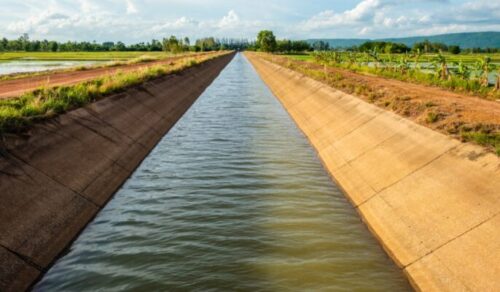CANAL AND ITS CLASSIFICATION AND ADVANTAGES & DISADVANTAGES OF CANAL IRRIGATION
Introduction: A canal is an artificial waterway that is constructed to convey water from one place to another. The primary purpose of canals is to provide irrigation water for agriculture. Canals are also used for navigation, water supply, and hydroelectric power generation. In this article, we will discuss the classification of canals, the advantages and disadvantages of canal irrigation, and what is a perennial canal.
Classification of Canals: Canals can be classified based on their purpose, the source of water, and the type of construction. Based on their purpose, canals can be categorized into irrigation canals, navigation canals, and power canals. Irrigation canals are used to supply water to agricultural land, while navigation canals are used for transportation of goods and people. Power canals are constructed to generate electricity using water.
Based on the source of water, canals can be classified into two types: perennial canals and non-perennial canals. Perennial canals are fed by a perennial source of water, such as a river or a lake, and provide water throughout the year. Non-perennial canals are fed by a non-perennial source of water, such as rainwater or seasonal streams, and provide water only during the monsoon season.
Based on the type of construction, canals can be categorized into two types: lined canals and unlined canals. Lined canals are constructed with a lining of concrete or masonry to prevent seepage of water. Unlined canals are not lined and rely on the natural soil for water retention.
What is Perennial Canal? A perennial canal is a type of canal that is fed by a perennial source of water, such as a river or a lake. Perennial canals provide water throughout the year, which is essential for agriculture in areas with a dry climate. Perennial canals are constructed with concrete or masonry lining to prevent seepage of water. The water flow in perennial canals is controlled by gates and regulators.
Advantages of Canal Irrigation:
1. Canal irrigation provides a reliable source of water for agriculture.
2. It increases crop productivity and yields.
3. It is an efficient way of using water as it reduces water losses due to evaporation and seepage.
4. Canals can be used for transportation, fishing, and recreational activities.
Disadvantages of Canal Irrigation:
1. Canals are expensive to construct and maintain.
2. They require a large amount of land for the construction of the canal and its distribution network.
3. The water supply in canals is often limited and can be affected by droughts or low water levels in the source.
4. Canals can cause waterlogging and soil salinization, which can reduce crop productivity.
Conclusion: Canal irrigation is an important method of providing water for agriculture. Canals can be classified based on their purpose, the source of water, and the type of construction. Perennial canals are fed by a perennial source of water, and provide water throughout the year. Canal irrigation has several advantages, such as providing a reliable source of water for agriculture, but it also has disadvantages, such as being expensive to construct and maintain.


